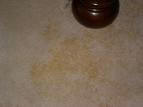
 |
In Home Sales The Boss Way |
| Phase 1 Arriving at the job And Selling The Messenger First 50% of the job. |
 |
A large percentage of our customers are women. And in there 1st impression of you they are evaluating you multiple levels. Both businesswise and personal. Whether you realize it or not customers have definitive views and opinions about you within minutes of meeting you. These views and opinions greatly determine their behavior while you are in there home. O-They are evaluating you in detail from the minute you arrive at there home. And they are evaluating you in ways they would be embarrassed to admit...
Its unspoken but its real, its just human nature....... But its also a pride thing. You see, the customer picked you. They could have had anyone come and clean their carpet and they picked you. Throughout the job there assessing " there selection". O-In there first impression, the customer starts mentally determining there behavior towards you....... For better or for worse !...........Our mission with in home sales is to make the customer feel a sense of "exceeded expectations" when it comes to their impression of you. If we can create this effect immediately, we have set the stage for a dramatic increase in income. Again, before we can sell any "messages" we must first sell the messenger, which is you.
|
|
|
 |
Basically we want to look new better and different then what they are accustomed to! We want that wow first impression! We want them to be impressed with the messenger. You |
Once we have effectively sold the messenger we move to phase 2.........
| Phase 2 Find problems the customer is living with. At least 50% through the job. |
 |
Every home has "Problems" the customer is living with. Something that if they had your ability and know how, they would probably not be living with. |
At about the half way
point through the job. (Once we have sold the messenger) start looking
around for problems that the customer is clearly living with. Be sure
to think in terms of problems you can definitely solve
for them.
|
Here are some
examples of problems a customer may be living with...
|
 |
While you are
cleaning determine at least 1 problem you want to solve for the customer.
Ideally 2 or 3 problems you want to solve. (But no more than 3) |
 |
Next
(While you continue to work) Voice the problem in a comment manner to
the customer. Example..."Your carpet is in really great shape, the only real problem I see is spots and stains" Example..."Your carpet is in really good shape the biggest problem I see is you just have high traffic areas" Example...."If it wasn't for the pet stains the carpet would really look great" Example...."Wow you must get allot of dust in this area I noticed allot of dust behind the doors on the carpet and even on the drapery in the living room. But looks like the carpets cleaning up great for you..." Notice how its done very passively as just normal conversation and it's said in passing.....
It helps the customer see why her carpet looks dirty
And more importantly, now a problem has been clearly defined! The simple act of you clearly stating a problem you see. (In a passive comment manner. Sets the stage for a solution to be offered.)
Do not offer a solution at this point! Simply, go back to cleaning.
|
|
|
Go back to cleaning and wait a few minutes........ |
| I think I have a solution to keep these traffic areas cleaner longer for you. Ill Give you a quote on something maybe you can have done on your next cleaning to solve that..... |
 |
Then simply let the customer know that you have a solution for the problem you mentioned earlier and you will give them a quote for future reference. |
 |
By emphasizing that the quote is for future reference the customer is completely put at ease. And is completely open to hearing more because the sales pressure has been completely turned off. |
We are now ready for the 3rd and final phase...... giving the customer a quote
| Phase 3 Give the customer a quote with incentives. Upon service completion |
 |
Now that we have permission to give the client a quote. We want to finish the service that you are performing. Then before putting your hoses away we want create a quote for the customer that has 2 options : O-An "anytime price" that is good whenever the client wants the service done. O-And a "right now" price that is lower since we are already in the home. (This price will also include an incentive) As a general rule go out to your van and take your time preparing this. We want the quote to be very well written so it is easy to read and very clear. Keep in mind: The goal of the written quote is to let it be the tool for explaining the offer to the customer.
|
|
 |
 |
Now simply give the client your quote and give a brief explanation of the difference between the 2 prices and explain what kind of results they can expect.... |
| To recap, this simple system is 6 easy steps... |
| 1 | 2 | 3 | 4 | 5 | 6 |
 |
 |
 |
 |
 |
 |
| We wowed the customer with our personal professionalism. | We wowed her with our cleaning results | We found a problem the customer was living with. | At the midway point of the job we voiced the problem as a comment. To clearly define a the problem in the clients mind. | We later offered the customer a free price quote for future reference. Implying a future solution to the problem. | We produced a quote that has 2 prices. An anytime price. And a right now price with no service charge. And with an incentive. |
| Steps | Why It Works? | |
| 1.) | First impress the customer with you and your workmanship. Make this the first "wow" they experience. This is critical ! | Because you first must sell the messenger before you give messages. And because the cleaning results you achieve will actually create natural "curiosity" and "intrigue" that will be huge in step 5. Shocking a customer with results creates massive curiosity and intrigue about "what else could I clean???" .......or ....."How else could I improve my home???" |
| 2.) | Look for problems they are living with. | If you lived there "knowing what you know" what would bug you? |
| 3.) | Make the customer consciousness of the specific problem with a neutral, passive statement. In this sense you are using your expertise to help them understand what specifically is the problem that makes the item not look good. | Because the customer thinks in general terms like "my carpet is dirty" you can help her see it in specific terms like "My carpet looks dirty because of my 3 high traffic areas" or my various "stains" . You are defining a specific problem they are "living with". |
| 4.) |
Tell the
customer you have a solution for that
problem but discuss it in future tense. Example: "I have a great solution for that traffic area problem ill leave you a quote so you can maybe try it next time we come out..." |
Because this is very comfortable for the customer. By talking about it in in "future tense" your implying they don't have to buy today...Which removes the pressure and opens them up to exploring the idea with no stress or feeling of sales pressure. And by them learning more in this "comfortable state", curiosity and intrigue can be created in a natural way. |
| 5.) | Offer the customer a free price quote for "future reference' and use the boss quote form to create incentive to take action now. You simply explain the form.... | Because this creates "comfortable incentive" for the customer to act now....Please keep in mind......step 2 through 5 are just mechanics of creating a comfortable scenario for the customer to explore the idea of buying......WHETHER THEY BUY, IS MOSTLY DETERMINED BY STEP 1!!!!!!!! |
|
|
Here is a quick
tip about offering Dupont Teflon to
customers..... Always use the term
"re-apply" or "renew" not "apply". Both
phrases reinforce the fact that the carpet
originally had a sealer applied at the mill.
Most customers do not comprehend that you are
offering a treatment that the carpet was
designed to have reapplied through its lifetime.
By using "re-apply" or "renew" you are
emphasizing this. |